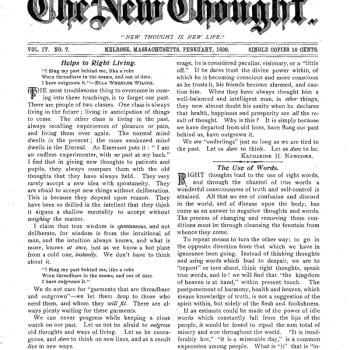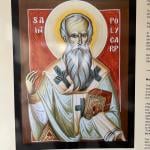I have been writing about the cultural and spiritual impact of the First World War, and especially the cataclysmic end of that war in 1918. This takes me back to a topic that I have published about quite a bit, namely white American attitudes to Native peoples, to American Indians. Briefly, the years immediately around 1918 marked a historic cultural shift in the US, as elite white thinkers argued a position that is common today, but which was radically novel then, namely that “primitive” races were actively superior to what White Christian America had to offer. And so were their religions, and their spirituality. If I am right about this, that is quite a turning point. (Some White elites already idealized the great world faith of Buddhism, but that is another story).
White thinkers had long explored Native cultures, but the tone of that coverage shifted dramatically in 1917–1918. Before that point, some authors speak admiringly of Native cultures and the religious practices that lay at their core; but very shortly afterwards, we find frequent suggestions that Indian civilization might actually be superior to its Western counterpart. Far from being a troublesome roadblock on the route to progress and civilization, Indian religions were an essential safeguard against those very curses.
One reason for this change was the presence of the booming bohemian colony at Taos. After the arrival of Mabel Dodge, the ensuing pattern of chain migration meant that a direct highway now ran from Greenwich Village to Taos. She was followed by artists such as Georgia O’Keeffe, Maynard Dixon, John Marin, Ansel Adams, and Marsden Hartley; novelists like Willa Cather, Aldous Huxley, and D. H. Lawrence, poets like Robinson Jeffers; and activists like John Collier. Culturally, Taos Pueblo itself became one of the most powerful symbols of the newly discovered Indian civilization. New Mexico became a fashionable literary theme.
The other epochal change around this time was the Great War. Many of the new intellectual arrivals came from liberal circles opposed to American involvement in the war, which they saw as a cultural disaster. More immediately, the hyper-patriotic reaction to war in 1917 made urban life uncongenial for radicals, socialists, and feminists. It was the war that drove Elsie Clews Parsons to the Southwest, to seek refuge in her research among the Pueblos. But the long-term effects were also obvious. In the aftermath of Verdun and the Somme, claims about the natural superiority of European civilization sounded brittle, if not ludicrous.
Perhaps European civilization had maimed itself once and for all. Scott Fitzgerald believed that educated Americans returned from the war “to find all gods dead, all wars fought, all faith in man shaken.” In 1920, Natalie Curtis argued that “the war, with its hideous revelation of barbarism may at last teach us of the white race that we are not so far ahead of the darker races as we thought.” And the war had other implications, given the Wilsonian rhetoric of self-determination. If the United States was fighting for the rights of small nations abroad, Americans should fight at home for “the right of the American Indian to be himself; to express his own ideals of beauty and fitness in his religion, his customs, his dress and his art.” America’s own prospects seemed bleak given the political conditions of 1919–1920, those red years of riots, strikes, race wars, and terrorism.
Through the 1920s, Native peoples were extolled for resisting the forces of modernity, urbanism, industrialism, and mass society, the evils of bourgeois civilization of which the Southwest seemed so blessedly free. Once again, Indians symbolized those features that the West was losing or betraying. Against a Christianity that worshiped the bourgeois ethic and despised sexuality, the bohemians sought a romanticized pure culture still in touch with nature and with the body, free of the curse of civilization. The rejection of Christianity was accelerated by the churches’ embarrassingly vocal support for nationalism and imperialism in the war years, followed in the 1920s by the excesses of fundamentalism and neo-Puritan moral campaigns.
After 1917–1918, some writers on Indian culture adopted a tone that would become familiar during the 1960s and 1970s, listing ways in which “we whites” could learn from the Indians. In this view, Western material wealth concealed spiritual poverty. Mabel Dodge experienced a kind of conversion experience hearing Indian music for the first time, in December 1917:
For the first time in my life, then, I heard the voice of the One coming from the Many. . . . The singular raging lust for individuality and separateness had been imperiling me all my years as it did everyone else on earth—when all of a sudden I was brought up against the Tribe, where a different instinct ruled . . . where virtue lay in wholeness rather than in dismemberment.
In 1918, Natalie Curtis was arguing explicitly for the superiority of Indian religion on grounds that would become quite mainstream later in the century: “Surely not the least of the lessons that we may learn from the red man is reverence for the earth-mother, giver of life; for no Indian would dream of calling a mountain reaching skyward ‘Old Baldy’ or ‘Pikes Peak,’ nor would he slaughter game, sacred to the needs of man, for sport only.”
In 1920, Marsden Hartley published an ambitious statement of Indian cultural superiority in “An American Plea for American Esthetics,” an essay that offered powerful ammunition against current attempts to suppress Indian rituals. Hartley saw
“the red man [as] the one truly indigenous religionist and esthete of America. He knows every form of animal and vegetable life adhering to our earth, and has made for himself a series of striking pageantries in the form of stirring dances to celebrate them, and his relation to them.”
Throughout the dances of the southwestern Pueblos, “the same unified sense of beauty prevails, and in some of the dances to a most remarkable degree.” At Tesuque,
“You find a species of rhythm so perfected in its relation to racial interpretation, as hardly to admit of witnessing ever again the copied varieties of dancing such as we whites of the present hour are familiar with. It is nothing short of captivating artistry of the first excellence.”
The religious quality of the rituals was beyond question, however much “we whites” might fail to appreciate it: “The red man is essentially a thankful and a religious being.”
Anglo-Saxon civilization was not necessarily the peak of human achievement, a subversive message in the early 1920s, the years of peak success for the Ku Klux Klan. Nor, specifically, was Christianity the highest form of spiritual expression.
In terms of his direct ability to shape practical policies toward the Indians, the most important of the new arrivals was John Collier, a social worker and community activist who became perhaps the country’s best known and most influential commentator on Indian affairs. At Christmas 1920, Mabel Dodge took him to witness the Red Deer Dance at Taos Pueblo. He was astonished at what he saw, at the ceremony that was
“religious (as we white people know it) and cosmical (as we white people do not know). . . . The tribe’s soul appeared to wing into the mountain, even to the Source of Things. . . . Here was a reaching to the fire-fountain of life through a deliberate social action employing a complexity of many arts … These men were at one with their gods.”
For Collier, the experience was life-changing, literally a moment of religious conversion:
“I was rocked; it was like a hallucination or earthquake; a sudden dread-fear; the time-horizon pushed back in a moment and enormously. . . . That solitary experience of ‘cosmic consciousness’ had been mine, that forever solitary translation.”
The dances “entered into myself and each one of my family as a new direction of life—a new, even wildly new, hope for the Race of Man.” Change the language slightly, and this is surely a classic born-again moment?
Like many Americans, Collier was suffering badly from the fading of the hopes of social improvement that had flourished during the Progressive era, and he was devastated by the World War and its aftermath. In his autobiography he wrote,
“The year 1919 saw the fading away of practically all that I, we, all of us, had put all our being into. My own disillusionment toward the occidental ethos and genius as being the hope of the world was complete. . . . I knew that the old world was finished.”
Desperately in search of a new world, he saw it at Taos or, rather, he convinced himself that the Pueblo dancers fulfilled his dreams. The power to live “is the ancient lost reverence and passion for human personality, joined with the ancient lost reverence and passion for the earth and its web of life.” And this is “what the American Indians almost universally had; and representative groups of them have it still.” Instead of glorifying noble Nordic roots, as many reactionaries did in these years, Collier transferred his Teutonic dreams to living Indian societies.
Collier famously declared that, in the Pueblo communities, he had found a Red Atlantis, a term that was even more evocative in the context of the time than it would be today, and which implied more than just a romantic dream. In the early twentieth century, the idea that Atlantis had been a genuine lost civilization was widespread, and not just among esoteric true believers. To assert any kind of connection between modern Pueblos and Atlantis was to locate their rituals in remote antiquity. But whether he believed in a literal Atlantis, Collier knew that Indian religions were truly ancient, far older than the Judeo-Christian faiths, and on these grounds alone deserved respectful sympathy. “These ‘pagan’ religions have sustained a whole branch of the human race across ages in comparison to which the epoch of Christianity dwindles to a brief time.” Indians symbolized the mystical relationship between human communities and the land, which in many ways foreshadows later environmentalism.
“What we mean mystically by the Universe, the ancient Indian meant by the Land. From it, the Source, no single member of the tribe must be shut away. Beneficial use of resources was the measure of ownership. The profoundest of tribal ceremonialism was inspired by the will to help the land do its work and to renew the soul out of the land.”
With his Nature worship and his rejection of industrial civilization, the Collier of 1920 would have found himself completely at home in the counterculture of the late 1960s. Why Collier matters so much was that Franklin Roosevelt made him Commissioner for Indian Affairs from 1933 through 1945, during which time he revolutionized US policies towards Native peoples. He oversaw an “Indian New Deal.”
Another lasting consequence of that cultural and spiritual revolution in and around 1918.
I am drawing material here from my 2004 book Dream Catchers.













